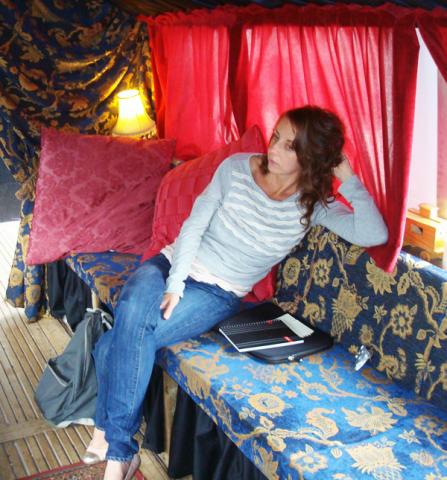Maxine Doyle
Choreographer
Interview: Deborah Vlaeymans
London ,
May 2009

EXTRACT FROM INTERVIEW:
How do you go from idea to performance? How does it all start?
I will try to talk about the Punchdrunk Theatre Company but with a main focus on my own approach, because it's difficult to talk singularly about the creation process – it really is a collaborative or a big creative team and everything feeds in.
But essentially... We're always looking for a building. We haven't really conceived yet a show where it isn't about the building, space, or about site. Other members of the artistic team are excited about the experiences, the sites and the building, whereas I tend to use the text as a starting point. I start to daydream about the text and how I imagine this world. A world appearing and revealing itself. So my process starts with the text. I start with the score or the sources whether it might be the music sources that we're interested in, or film sources, artworks. And then I try to identify particular kinds of ideas. It's a process of stripping things down to something that is very easy. Easily digestible and manageable or translatable. I strip the text down to try to find individual ideas and then look at the kind of company – in regard to performers – that we're going to work with.
The performers are really, really important. We have a core company, not a regular company of performers, but a group of people that we have worked with regularly over the last five years, and they offer a combination of particular skills - physical skill, choreographic skill - and a kind of presence that is very enigmatic and charismatic. As an audience member you can be really drawn to them.
So I suppose that the creative process begins when I start to dream about the ideas and these people, and the ideas start to become alive. When I start to imagine how a performer can embody these ideas. Casting is a huge part of the process.
We cast a combination of performers we work with regularly that we really trust, and then particularly we try to identify new artists who might be filling a gap or a hole. And for me I suppose the most exciting part of the process happens in the rehearsal studio - as opposed to working on site. Even though we are a site-based company and the work is driven by the building, it is really important that we have this protected time off-site, which might be two, three or four weeks. And actually in my dreams I would always have longer off-site and longer on-site time. The off-site time is really protected, because that is essentially where the writing happens. When I say writing I mean the writing of the body, the physical language or the visual language.
.............
Edited by: Barbara Simonsen
